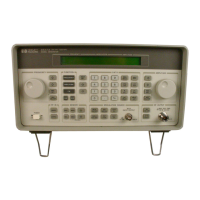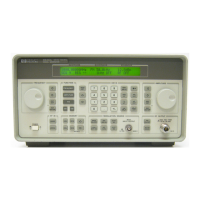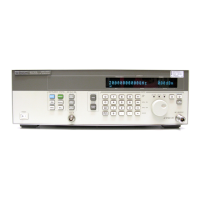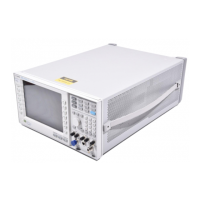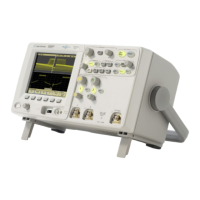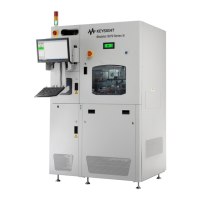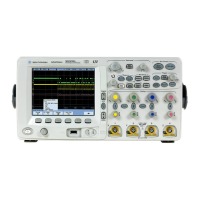33
Getting Started
Using the Through-Power Mode
1.5 Using the Through-Power Mode
NOTE Before using the instrument, you should make sure that it is properly
warmed up. The instrument is properly warmed up when it has been
switched on for a minimum of 45 minutes. Failure to do this can cause
errors of up to 0.04dB in the attenuation.
In the through-power mode, the instrument shows the power that
gets through the attenuator on the display (that is the power at the
output) rather than the attenuation.
When you select the through-power mode the attenuation factor (in
dB) becomes the value for the through-power (in dBm). Set the
calibration factor (see “Entering a Calibration Factor” on page 39)
to get the attenuation factor to the value of the through-power.
After measuring and setting this base power value, press S
YST
repeatedly until THRUPOWR is shown at the bottom of the display.
Select ON to select the through-power mode.
Edit the through-power factor by pressing A
TT, and then the
Modify keys.
1.6 Selecting the Wavelength Calibration and Its
Function
The attenuation at any point on the filter is wavelength dependent.
This dependence is measured and stored in the instrument, and is
used, with the value for the wavelength entered by the user to
compensate for the dependence. This is the wavelength calibration
data.
There are two ways in which this data can be used:
Artisan Technology Group - Quality Instrumentation ... Guaranteed | (888) 88-SOURCE | www.artisantg.com
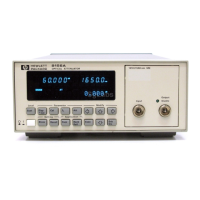
